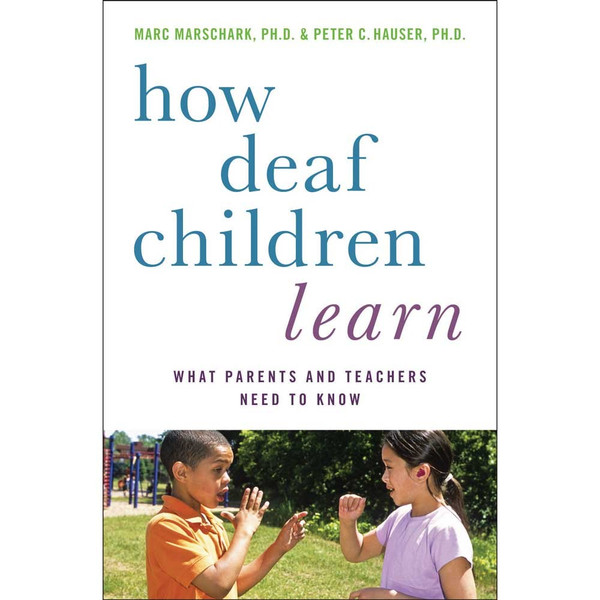 Loading... Please wait...
Loading... Please wait...- Visit Us: 8400 Menaul Blvd, Suite F, Albuquerque, NM 87112
- Home
- Books & Multimedia
- Classroom
- How Deaf Children Learn
Shop our Store
How Deaf Children Learn
Product Description
How can parents and teachers most effectively support the language development and academic success of deaf and hard of hearing children? Will using sign language interfere with learning spoken language? Should deaf children be placed in classrooms with hearing children? Are traditional methods of teaching subjects such as reading and math to hearing children appropriate for deaf learners? As many parents and teachers will attest, questions like these have no easy answers, and it can be difficult for caring adults to separate science from politics and fact from opinion in order to make informed decisions about how to help deaf children learn.
Authors Marc Marschark, Ph.D. and Peter Hauser, Ph.D. stress that deaf children have strengths and needs that are sometimes very different from those who can hear. Consequently, if deaf students are to have full academic access and optimal educational outcomes, it is essential that parents and teachers learn to recognize these differences and adjust their teaching methods to them. Marschark and Hauser explain how research conducted over the last several years can markedly improve educational practices at home and in the classroom, and offer innovative strategies that parents and teachers can use to promote learning in their children. The result in a lively, accessible volume that sheds light on what it, means to be a deaf learner and that provides a wealth of advice on how to best support their language development, social skills and academic success. [Marc Marschark, Ph.D. Peter Hauser, Ph.D.; (2011) 168 pages; hard cover]
Authors Marc Marschark, Ph.D. and Peter Hauser, Ph.D. stress that deaf children have strengths and needs that are sometimes very different from those who can hear. Consequently, if deaf students are to have full academic access and optimal educational outcomes, it is essential that parents and teachers learn to recognize these differences and adjust their teaching methods to them. Marschark and Hauser explain how research conducted over the last several years can markedly improve educational practices at home and in the classroom, and offer innovative strategies that parents and teachers can use to promote learning in their children. The result in a lively, accessible volume that sheds light on what it, means to be a deaf learner and that provides a wealth of advice on how to best support their language development, social skills and academic success. [Marc Marschark, Ph.D. Peter Hauser, Ph.D.; (2011) 168 pages; hard cover]



